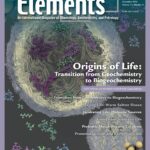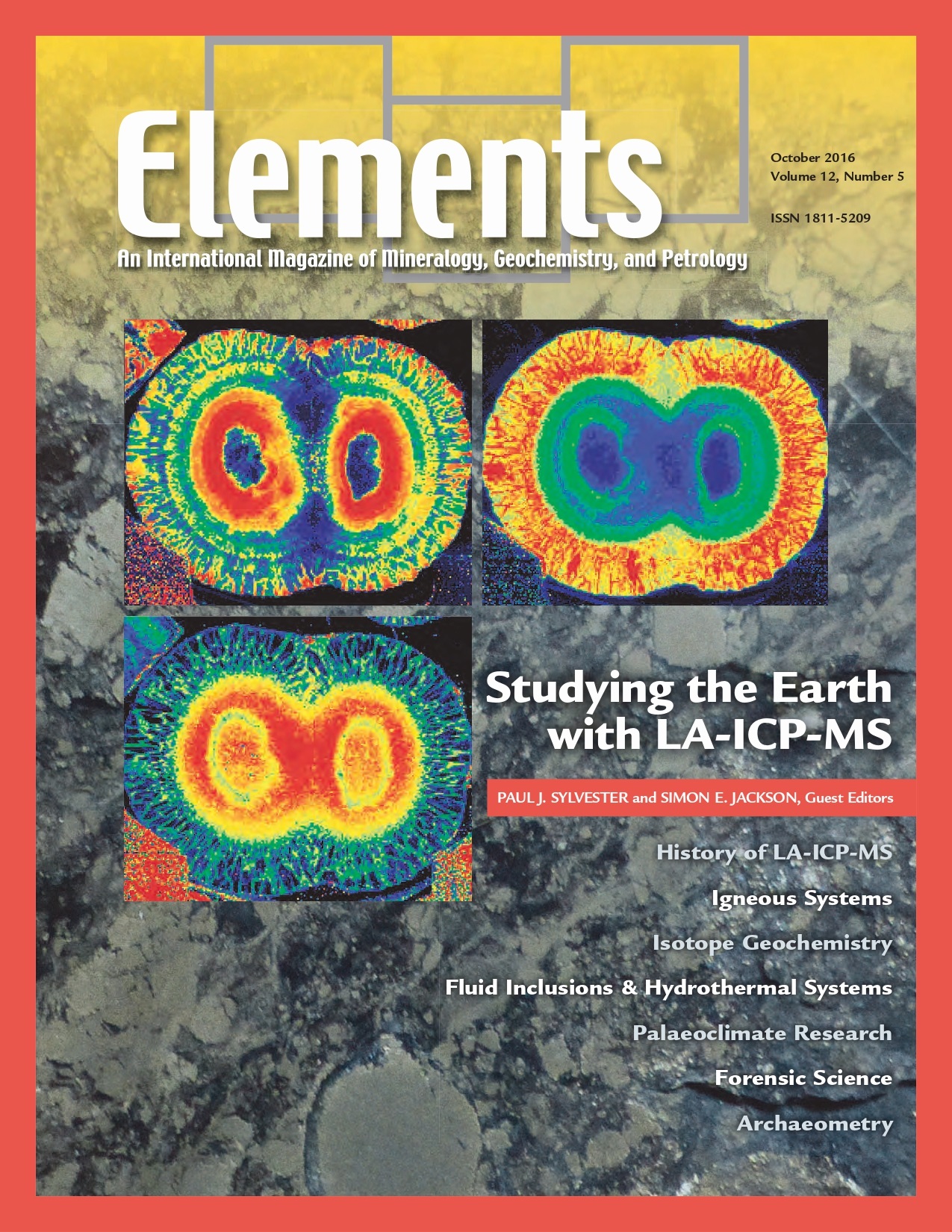
Geomicrobiology And Microbial Geochemistry, December 2015, Vol. 11, No. 6
June 28, 2024
Origins Of Life: Transition From Geochemistry To Biogeochemistry, December 2016, Vol. 12, No. 6
June 28, 2024Studying The Earth Using La-ICPMS, October 2016, Vol. 12, No. 5
$20.00
Laser ablation – inductively coupled plasma mass spectrometry (LA-ICPMS) is a mature, but still developing, micro-analytical technique that has allowed significant research advances in many areas of the Earth sciences. The method produces quantitative elemental and isotopic analyses on the micrometer scale of most solid, and some liquid, materials across most of the periodic table.
Studying The Earth Using La-ICPMS
October 2016, Vol. 12, No. 5
Laser ablation – inductively coupled plasma mass spectrometry (LA-ICPMS) is a mature, but still developing, micro-analytical technique that has allowed significant research advances in many areas of the Earth sciences. The method produces quantitative elemental and isotopic analyses on the micrometer scale of most solid, and some liquid, materials across most of the periodic table. A key strength of the method is that it can detect changing conditions or processes over time by analysis of growth zones or domains in minerals and other objects. Recent developments in rapid-wash out ablation cells and data handling software permit elemental and isotopic mapping of materials. Because both inorganic and organic materials can be analyzed, abiotic and biotic processes, and their interactions, can be studied. This issue of Elements highlights applications of LA-ICPMS across the broad range of disciplines of interest to the Earth, environmental, and biological sciences that now rely on the technique and their interdisciplinary nature.
Why You’ll Love Elements Magazine:
- Expert Contributors: Articles written by renowned researchers in the field of geoscience.
- Engaging Content: Join a community of readers who are passionate about Elements.
- Exceptional Quality: Each issue is printed on high-quality paper with stunning visuals and detailed illustrations that bring complex scientific concepts to life.
Order your copy of the October 2016 issue of Elements magazine today and study the Earth using LA-ICPMS.
Related products
-
The Nuclear Fuel Cycle – Environmental Aspects, December 2006, Vol. 2, No. 6
$20.00Increasing concerns for the effects of global warming that result from rising greenhouse gas concentrations in the atmosphere have led to a reexamination, even enthusiasm, for nuclear power. Of all the current alternatives to fossil fuels, nuclear fission is the most important source of energy, accounting for 17 percent of the world’s electricity.
-
Glasses And Melts: Linking Geochemistry And Materials Science, October 2006, Vol. 2, No. 5
$20.00Geological interest in studying melts stems from early recognition that melts play a fundamental role in determining the physical and chemical behaviour of magmas and magmatic processes. However, due to the inherent difficulties associated with working at high temperatures, much of the geological research over the last 30 years has used quenched melts or glasses as proxies for melts themselves.
-
Diamonds, March 2005, Vol. 1, No. 2
$20.00Diamond, the fascinating ultrahard mineral, is the focus of considerable interest and scientific research. Recent advances particularly relevant to geoscientists include: diamond as a recorder of Earth processes from the perspective of inclusions, chemistry, and conditions of formation; synthesis for research applications and processing to modify color and physical properties, important to diamond gems and anvils; the implications of nanodiamonds from meteorites.




